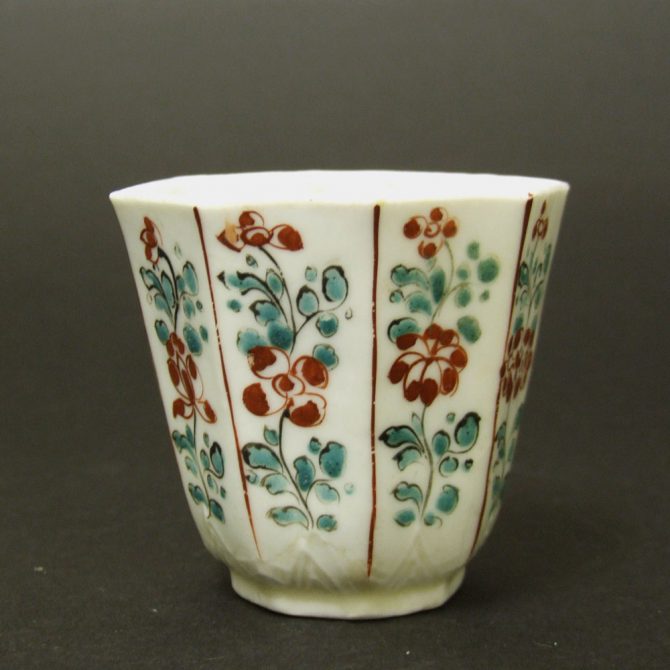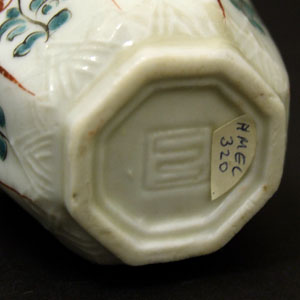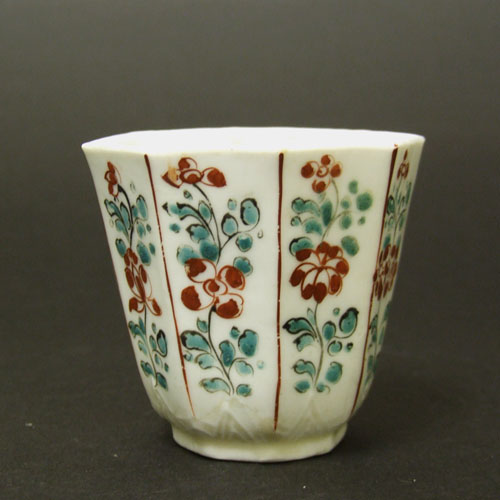
KANGXI 1662 – 1722 English Decorated Blanc de Chine Porcelain
A Kangxi Blanc de Chine Porcelain Faceted Beaker Decorated in England. The Porcelain is Kangxi 1662-1722. The Decoration Added in England c.1700-1720. The Base of the Beaker has a Moulded Mark `Yin`.
The Dresden inventory describes these as chocolate cups.
SOLD
- Condition
- The rim with a stained crack c.10mm.
- Size
- Height : 6.5 cm (2 1/2 inches).
- Provenance
- Mentmore Antiques Fair, 3rd April 1994. The Helen Espir Collection of European Decorated Chinese Export Porcelain.
- Stock number
- 22714
- References
- For a beaker with related decoration see : The Watney Collection of Chinese Porcelain Decorated in Holland and England. Bonham`s, New Bond street, London 7th November 2003. Part of lot 4. This is now in our `Sold Items` see stock number 18952. For other examples of this type of Chinese blanc de chine porcelain decorated in London see : European Decoration on Oriental Porcelain 1700 - 1830 (Helen Espir, Jorge Welsh Books, 2005) pages 208-213. The Helen Espir Collection of European Decorated Chinese Export Porcelain : "a member of the Oriental Ceramic Society and collector, with her husband. Having made a typical collection of Song and provincial Ming blue and white, they decided to concentrate on what used to be called `clobbered` porcelain. She is the author of the standard work on the subject, European Decoration on Oriental Porcelain,2005, the first to examine the work of European decorators on Chinese porcelain throughout the eighteenth and nineteenth centuries, focusing on enamellers in Holland, Germany and England. She has learned Chinese." From Provenance ; Collectors, Dealers & Scholars : Chinese Ceramics in Britain & America (Roy Davids, Dominic Jellinek, Privately Printed, 2011. ISBN 978-0-9570148-0-0).
Information
This type of decoration is based on a Japanese porcelain colour scheme of the late 17th Century. Blanc de chine beakers of this form and size are probably the mostly commonly encountered of all early London decorated Chinese porcelain. At this period Japanese porcelain was more expensive than Chinese porcelain, so by enamelling the blanc de chine in England an extra economic advantage was added. The white Chinese porcelain was made more decorative and expensive by being enamelled as well as being made to appear like the more expensive Japanese porcelain.

